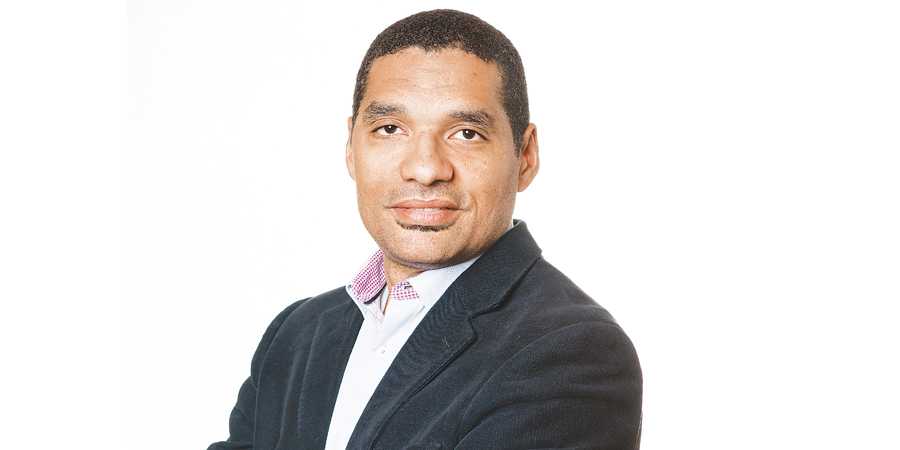By Femi Oshiga, vice president of service providers for Middle East and Africa, CommScope
LTE expansion and 5G
After the disruption wrought by the Covid pandemic, stimulating economic growth is now an imperative. And technology will drive this growth. Obtaining optimum performance from digital devices means putting reliable mobile networks in place at a vigorous pace.
Mobile networks are expanding at an impressive rate across the Middle East and 2021 promises to be a golden year for building the basis of a truly interconnected economy. Networks come in all shapes and sizes but they must be designed using the right equipment. Consumers rightly expect this equipment to aesthetically blend into their environment. Form and function matter more than ever.
Close cooperation between operators and suppliers starts with identifying equipment that meets these needs. Examples of such successful collaborations between both these parties are increasing each month.
Streamlining to prepare for 5G
With a national mobile penetration rate of about 125 percent, Morocco is among the most developed mobile markets in North Africa. The vast majority of the country’s internet connections (93.2 percent) are over cellular connections. Currently, the fastest growing wireless provider in Morocco is inwi, headquartered in Casablanca. Its nationwide mobile/fixed network serves more than 12.5 million users with a mix of 2G/3G/4G and fixed wireless access (FWA) services.
Most recently, inwi became the country’s first to deploy an innovative 28-port, all-in-one antenna from CommScope, streamlining its network and paving the way for 5G. Large spectrum bands availability benefit inwi in capacity and traffic management but not without challenges; network complexity design increase, and interference.
The network operator needed a customized antenna solution; one that could support a wide range of spectrum bands, and was fast and easy to install and connect. When they began preparing their network for 5G, inwi called on CommScope and their innovative all-in-one antenna.
With a set of passive antennas network, operators can opt for hardware that optimises power consumption right across their network. This tackles questions of sustainability in 5G implementations head-on. It pays to recognise that an area where traffic will be low can use passive antennas instead of larger ones that need more power.
At CommScope, we deal with a whole gamut of technologies for networks that in turn could play a role in transforming economies. Looking ahead at the communications needs of tomorrow requires an understanding that not all end-users are the same, and that circumstances vary.
CommScope has no doubts that connectivity has moved to the top of the agenda when it comes to enabling economies to thrive. Countries across the region see 5G as a springboard for economic activity. But in an environmentally conscious world the network underpinning 5G has to be unobtrusive and frugal in its energy needs. Our technology is integrated into a range of slim antennas that are packing more functions into a neat footprint. This suits contemporary thinking on urban design and respects the public’s view.
Fibre plays a critical role in meeting growing network demands
Service providers have seen their home networks put under unprecedented strain during the COVID-19 crisis. Home-working, home-schooling and generally more home-based living have resulted in a surge in demand for bandwidth.
Squeezing more out of less is important for the whole telecoms industry. We have found ways to push fibre deeper into the network while managing cable connections more efficiently. Therefore, less digging, and less cost for the network operator who can make the most of the connections that already exist within a finite spectrum.
Connecting Indoors
While fibre quite rightly took centre stage for operators while we’ve all been at home, attention will now turn back towards indoor wireless connectivity. After all, we spend most of our time using wireless devices while indoors.
From stadiums and airports to hospitals and busy offices, delivering mobile connectivity indoors can represent a significant challenge. This is due to the volume of people – and therefore mobile traffic –in the building, or the architecture of the building itself. Energy-efficient, glass-heavy buildings block higher frequency spectrum bands relied on for 4G and 5G connectivity, for example.
CommScope’s ONECELL, part of our small cells portfolio, enables mobile network operators to meet the growing demand for reliable LTE and 5G services indoors. Consumers have been dazed by years of 5G hype. Finally, they will see 5G delivering in their lives in the next couple of years and without obtrusive infrastructure or patchy access.
Proactive network operators will have 5G in place as they strive for ubiquitous lightning-fast communications in the near future. This will be the year new design approaches are taken to accelerate the economic viability. The investment to make that happen is already in place.
Mobile connectivity is critical for economic renewal. And to quote Mats Granryd from the GSMA, “our sector will form the backbone of the future global economy.”
